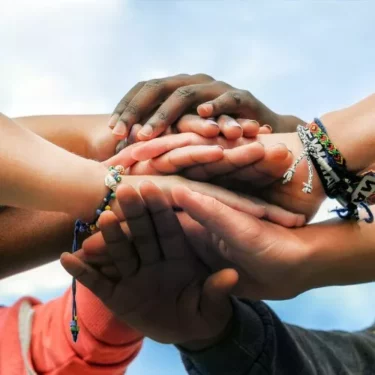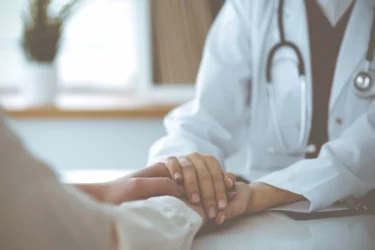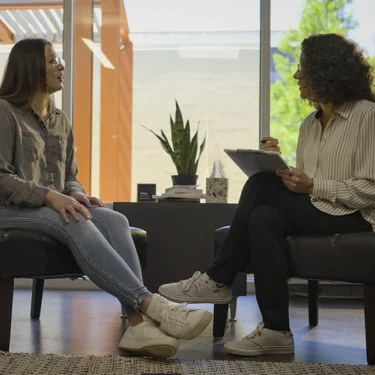Despite the pandemic, on Saturday, May 30, a few close friends and I couldn’t stay inside any longer. In the week following the deaths of George Floyd and Breonna Taylor, we watched as, city by city, protests spread across the country, and DC was next. We found ourselves in a massive group marching from the Capitol to the White House. The group remained relatively calm despite police violence toward protesters the night before. Having previously participated in several larger-scale actions in DC, my friends and I immediately recognized the way the police formations were coming into place around the crowd and what that could mean for this group. As they inched closer to us, we knew it was time to leave and take anyone we could with us or potentially face police violence, including tear gas. By the time we were a 20-minute walk away, as we predicted, reports of police shoving and pepper-spraying protesters showed up on Twitter.
That night, we watched on Twitter as police violence against protesters increased. My friend is a trained street medic and I’ve learned enough from her to provide basic support when she provides more advanced intervention. We headed out the next day to purchase new medic supplies — water bottles, pressurized saline, gauze, ice packs, glucose tabs and protein bars. Street medics have traditionally been an integral component of large actions and are trained to provide a broad range of first aid interventions that commonly occur during protests and demonstrations, such as heat exhaustion relief and tear gas eye flushes. On Saturday, we noticed that some folks were out with small first aid kits and water, but there were not enough for the incredible size of the seemingly spontaneously-gathered crowd.
The next week, as we headed downtown to where folks were protesting, we found we weren’t the only ones out to provide support. By then, individuals had shown up in multitudes with masks, water, snacks and first aid throughout the entire area. People arrived with cases of water, bags of granola bars and packs of masks at organized supply drop-off stations. On Twitter, maps appeared to show where streets were blocked off; where police, National Guard and other agencies were gathered; where protesters were moving; and where to find supplies and medical care throughout the downtown area.
But, support for this movement and for each other was so much broader than the material and medical support. The community came together for healing in the midst of the protest, as part of the protest. The fence around the White House, put up to keep protesters out, became a gallery of art, signs and messages in support of Black Lives Matter, an end to police brutality and for justice for George Floyd, Breonna Taylor and the countless Black victims before them. Black Lives Matter DC, in addition to a full day of actions, organized a Black Joy Party on the newly named Black Lives Matter Plaza near the White House, “holding space for Black people unapologetically.”
Community Resilience
Across the country, organizers and protesters are demonstrating a critical component to healing and wellness — community resilience-building. Traditionally defined as “a community’s ability to withstand, adapt and recover from a disaster or public health emergency,” according to the National Association of County Health Officials (NACCHO), this term should be expanded to encompass the mental and emotional health and wellness of a community. This new definition “encompass[es] resilience in the daily adversities that communities may face (e.g., insufficient access to social services, poor housing conditions, systemic racism).”
Just as resilience is a source of healing and transformation from traumatic histories on an individual level, when communities engage in resilience-building they promote their collective ability to “bounce back” and endure experiences of trauma, such as the deaths of George Floyd, Ahmaud Arbery, Sandra Bland, Tamir Rice and Emmett Till. This creates a cyclical effect — the community engages in resilience-building, which supports individual resilience, which feeds back into the community’s collective strength.
This isn’t new. Communities, particularly those experiencing systemic discrimination and oppression, have practiced community resilience-building strategies for centuries. Providing food and housing for each other, raising children together, joining together in spiritual practices — all these strengthen communities and make it possible for each person and the whole community to weather challenges and fill the gaps and heal the pain created by a broken system.
Behavioral Health Care and Community Resilience-building
This moment, this movement is a call to behavioral health care to support and foster community resilience. To do so is the only way to provide meaningful care.
Engage in individual strategies to promote individual resilience rooted in community:
- First, recommit yourself, as a clinician, peer or administrative staff, to investigate and challenge your implicit biases around sources for healing. Whether it is a spiritual practice that is new to you or the fundamental idea that treatment isn’t the only component to recovery, root out the biases you’ve adopted over time. This is bigger than a diversity training; this is a paradigm shift, an everyday commitment to valuing and supporting your clients’ unique pathways to recovery.
- Then, promote community resilience-building activities with your clients:
- Encourage clients to seek out and invest in their support networks and community, however they define them, as a source of healing, meaning and purpose.
- Ask clients what spirituality means to them and their mental health. For some, it may mean going to church, synagogue or mosque. Others may choose a different form of spirituality. Regardless, the positive impacts of spirituality on mental health cannot be disregarded.
- Discuss with your clients how they might get involved with protest and activism in this moment as part of their healing and community-building. Protesting in person may not be possible for everyone, particularly given the concerns around COVID-19, but there are many ways to get involved. Brainstorm with your interested clients how they might want to show their support with local organizers.
As a member of your community, your organization should also consider its role in community resilience-building activities.
- What commitments have your organization made to promote health equity, to advance racial justice and to address social determinants of health?
- What community resilience-building activities would your clients, staff and community like to see you engage in? How can your organization develop and execute a plan to promote community health and development?
- Have you explored tools like the Building Community Resilience Toolkit Series?
- How do supervisors actively encourage their staff to engage in these resilience-building techniques as part of their self-care and compassion resilience? Have they worked to root out their implicit biases to better support staff?
National Council member, Bread for the City, in Washington, DC, is a great example of how health care providers can engage in community resilience activities, particularly at this moment. Their medical staff blocked 7th St., NW, a major thoroughfare in DC, every day for weeks to draw attention and show their support for Black Lives Matter and racial justice. Their CEO and other staff distributed water, food and PPE at the protests near the White House, and they opened a free, walk-up COVID-19 testing site for anyone participating. They have embraced their role as a member of the DC community, rather than shy away and are an inspiring example of how health care can promote community resilience.
Many organizations are struggling with what their role should be at this time. There may not be a right answer, but there certainly is a wrong one — doing nothing. Ask a simple question of your staff, your partners and your clients: What is one way our organization can better show up for our community? You might be surprised by the ideas they suggest. Involving staff, partners and clients in your planning and decision-making supports community resilience and ensures your organization is acting from a place of social justice, rather than charity. Charity addresses an immediate need and is often done “for” those affected; justice seeks to address root problems, spur social change, and is done “with” those affected. This is our call to shift the way we approach behavioral health to a new paradigm based in justice. Ground your services, your decision-making and your planning in the community and seek to embody this new definition of community resilience. Do this and the right next steps will become clear.
Guest Author
Project Manager
Trauma Practice Area



